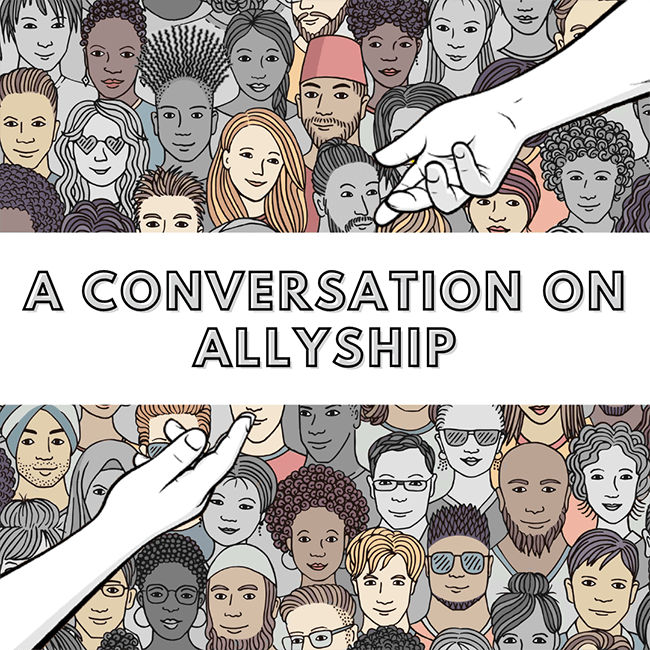
What does it mean to be an ally? How can you be one for an underrepresented group? Ashley Wells, Principal Strategist, Portfolio for Native Americans and Bali White, Principal Strategist, Portfolio for Sexual and Gender Minorities from the Office of Equity, Diversity, and Inclusion, discuss what it means to be an effective ally in today's society.
Bali: How would you define an ally?
Ashley: An ally is any person who supports, empowers, or stands up for another person or a group of people. Being an ally means taking the initiative to do your own research, instead of relying on others to inform you.
Ashley: What are some strategies allies can use to better support underrepresented groups?
Bali: I would recommend starting with recognizing privilege and using it to lift underrepresented voices. The truth is recognizing privilege can be difficult, but growth will only happen when we're challenged.
Ashley: I completely agree! Let's challenge ourselves and take a closer look at our own biases.
Bali: How can a more inclusive environment be fostered at the National Institutes of Health (NIH)?
Ashley: A more inclusive environment can be fostered by becoming a champion for someone from an underrepresented community to support career growth and increase retention. Another way is by calling out inappropriate behavior. Honestly, this is easier said than done. But individuals in privileged positions often have the ability to call out unprofessional and offensive behavior in the office without the fear of backlash.
Bali: I like the examples you've shared. I would start by encouraging employees to get involved with diversity and inclusion related tasks. Everyone at the NIH should be involved. Second, I would use inclusive language—awareness of gendered terms and using language that embraces all people, for example, saying "partner" instead of gendered terms such as "girl/boyfriend" or "husband/wife" to be more inclusive of those in the Sexual and Gender Minority community.
Ashley: Can you provide tips on how another Strategist, like myself, or employees can become an ally?
Bali: Absolutely. Follow the tips listed below to get started:
- Explore your own prejudices
- Take a stand when groups of people face unjust treatment
- Support underrepresented groups on issues that affect their communities
- Advocate for underrepresented groups to gain power in society
- Promote leadership opportunities to groups who don't typically occupy those positions
- Encourage others to be allies
- Build alliances among different groups
- Help increase visibility for underrepresented communities to avoid isolation
- Educate yourself about different histories and cultures
- Be a voice for others when groups are targeted and treated unfairly
- Make an effort to change the system-wide problems that may be root causes of oppression
- Promote leadership among different groups
Bali: What are some best practices you recommend for allyship?
Ashley:
- Listen to others
- Be aware of your implicit biases
- Research and understand groups before building an alliance
- Use your privilege to amplify suppressed voices in society
- Accept criticism with grace
- Be dedicated every day to allyship
Ashley: Here are some don'ts, but remember, none of us are perfect. We are all learning each step of the way.
- Avoid expecting to be taught or shown—be proactive and use creditable resources to learn and answer your questions
- Do not behave as the authority
- Avoid taking credit for the hard work of those who are marginalized
- Do not assume that every member of an underrepresented group feels oppressed
We hope this quick chat helped get you started on the path to allyship. For more information on allyship, read Why is Allyship Important? Good luck on your journey!
Helpful Resources
Do you have a story idea for us? Do you want to submit a guest blog? If it's about equity, diversity, or inclusion, please submit to edi.stories@nih.gov.
For news, updates, and videos, follow or subscribe to EDI on: Twitter, Instagram, Blog, YouTube.






